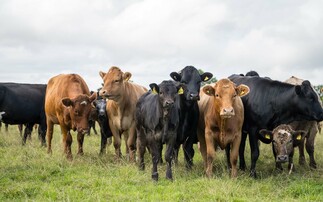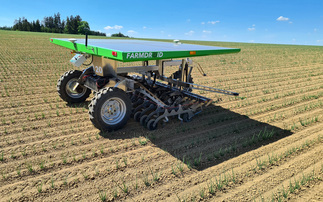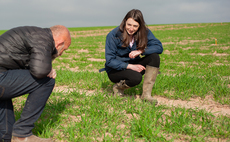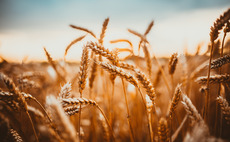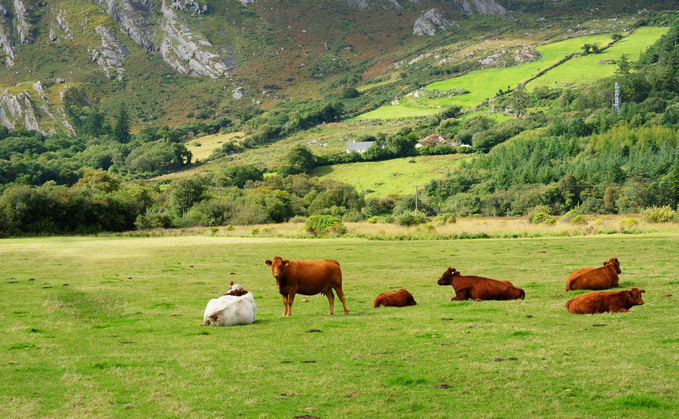
Analysis of Defra figures for beef, sheep meat, pork, poultry, milk, cereals, oilseed rape and potatoes revealed falls in UK output for every product apart from milk, which was similar to 2022.
The biggest drop in production was in oats at 17.6 per cent, but there was a reduction of more than 10 per cent for pork, OSR and wheat. Longer-term figures also showed that agricultural production of most products was not keeping up with the growth in UK population, which was at 0.3 per cent per year.
Population growth
Between 1984 and 2023, the UK population grew by 19.6 per cent, but beef, sheep meat and pork production was down 22.0 per cent, 5.8 per cent and 3 per cent respectively. Last year, wheat production was 6.5 per cent less than in 1984, with barley output 37.1 per cent lower.
READ ALSO: Dairy contract legislation laid before Parliament
There have been increases over the years. Oat and OSR production were 60.5 per cent and 31.6 per cent higher than in 1984, while production of poultry and milk was greater than in the mid-1990s, when Defra figures for those categories began. Poultry meat production jumped by more than 40 per cent, with eggs up almost 20 per cent and milk output being 9 per cent higher.
Looking at individual years could be misleading, so comparing five-year production cycles might be useful. They revealed slowing crop production, with average wheat output in the five years to 2023 down 8.5 per cent and OSR production down 42.1 per cent. Barley and oat production rose, but that might be due to difficult autumn weather and pest attacks resulting in growers choosing alternatives to wheat and OSR. UK livestock production fared better.
Beef production
Beef output in the five years to 2023 was 2.2 per cent more than in the five years before, with sheep meat production down 1 per cent. Beef and poultry meat production was up by more than 9 per cent, milk production up 2.7 per cent and egg output up 4.4 per cent. Poultry meat production in 2023 was 1 per cent off its high of 1.967 million tonnes in 2021, and accounted for a record 48.2 per cent of all UK meat production in the year. Milk was also only 1 per cent off its all-time high of 15.002 billion litres set in 2020. But every other product was at least 10 per cent lower than the record, with OSR output less than half of what it was in 2011.
READ ALSO: Maize underpins diet for north Yorkshire beef finishing unit
Poultry meat covered an increasing proportion of UK meat production. In 2023, it made up 48.2 per cent of total meat output; up from 37.3 per cent in 1994. Total UK meat production (beef, sheep meat, pork and poultry) was at its lowest point in 2023 since 2018, with the largest drop in annual production since the foot-and-mouth year of 2001.
Wheat
Wheat maintained its position as the dominant grain crop, accounting for 60 per cent of total production. Total cereal (wheat, barley and oats) and OSR production was at 22.989mt; 9.1 per cent down on 2022. The 2023 total was 2.8 per cent less than the 40-year average and 16.3 per cent lower than the record set in 1984. The figures did not include other important crops because data was not available. Defra's vegetable area figure for 2022 was at its smallest on record at 107,000 hectares; 44 per cent less than it was at its peak in 1991.
The fresh fruit area in 2022 was also the smallest on record at 32,000ha; down from 51,000ha in 1985. Higher costs, a pressure on margins and lack of labour likely resulted in another drop in the UK's fruit and vegetable area in 2023. Potato production might have also been the smallest on record in 2023 due to the combination of a small planted area and a very wet autumn.
Outlook for 2024
The AHDB has published its sector outlooks for 2024, which suggested that output for most farming goods would remain under pressure for the rest of the year and beyond. In the introduction to outlooks, economics and analysis director David Eudall said: "This is a picture of the demand pattern being stretched and being met with a domestic supply side under risk of erosion from unpredictable climate, higher costs and environmental schemes implemented in isolation from food production - something must give."
Dairy
Pressure on farmgate milk prices, labour shortages and higher borrowing costs were expected to limit milk production during 2024. The AHDB predicted a 1.1 per cent decrease in total output in the year to the end of March 2024, with production in the first half of the calendar year down 1.8 per cent. A stabilising of the market might mean production slips by 0.4 per cent in the second part of the year.
Wheat and barley
An AHDB survey in November anticipated a 3 per cent drop in wheat plantings for the 2024 harvest and a 7 per cent fall in barley area. However, more heavy rain in December could mean that the decrease was greater than those figures. Wheat production could be as small as 10.2mt and no more than 14.8mt if trends in previous wet autumns, including the 2020 and 2013 harvests, were repeated. In 2013, the final wheat area was 9 per cent less than the November survey and down 15 per cent in 2020. The total barley crop could be boosted by increased spring barley planting.
Pigs
The year could see a 0.6 per cent increase in production driven by a 0.8 per cent increase in slaughtering, forecasted the AHDB. Disease outbreaks and extreme weather could snuff out any recovery, while producers, stung by months of losses, would continue to be cautious in reinvesting, which would limit expansion in 2024 and 2025.
Beef
A small increase in the number of 12- to 30-month-old cattle could result in a 1 per cent increase in slaughtering to 2.06m head in 2024, the AHDB predicted. But tighter supplies of younger cattle could mean reduced supplies at the end of the year and into 2025.
Sheep
A smaller carry-over of lambs from 2023 to 2024 could reduce numbers by 10 per cent of 430,000 head, according to the AHDB. It expected the number of new season lambs slaughtered in the first half of the year to be down 4 per cent to 1.6m, but a 5 per cent increase in the second part of the year to 6.6m head.
Oilseed rape
The poor 2023 harvest and low prices meant that UK growers planted only 317,000ha of winter OSR in the autumn, which was 19 per cent down on 2023 and the smallest area since 2021, said the AHDB. Production could be as low as 900,000t or up to 1.1mt.








